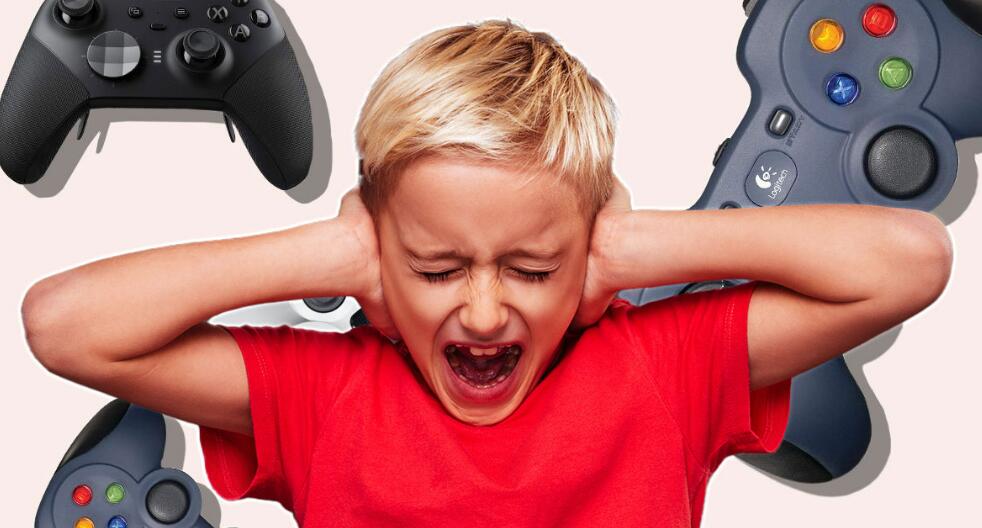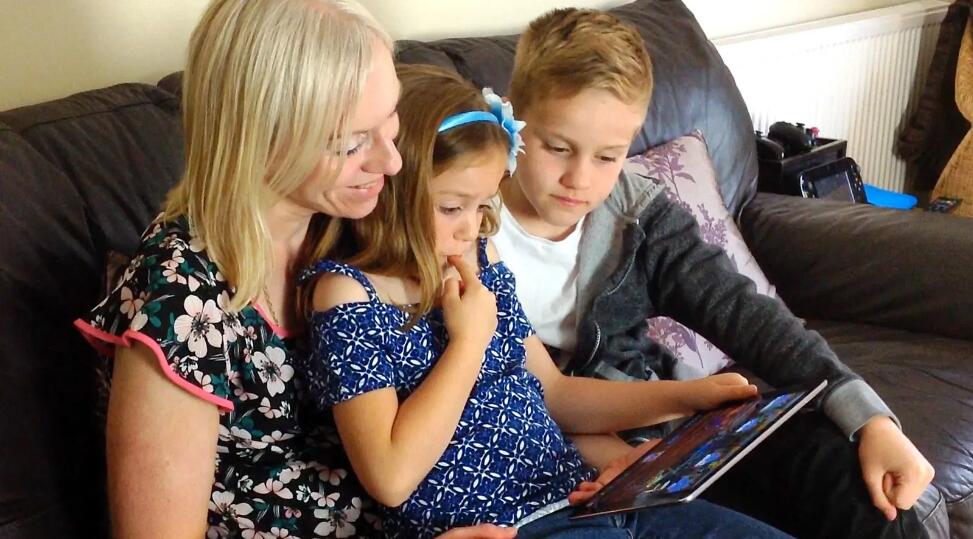Welcome to OSCAL (Well-known brand of rugged outdoor smartphone, tablet, and portable power station) blog. Hope this guide has been helpful.
In today’s hyper-digitalized world, children are growing up surrounded by screens. While technology offers educational benefits, entertainment, and connectivity, one rising concern among parents, educators, and psychologists is children's increasing addiction to video games. From mobile devices to consoles, games are more accessible and immersive than ever before. But at what cost?

Gaming addiction, also referred to as Internet Gaming Disorder (IGD), is no longer a fringe concern. It’s an officially recognized behavioral addiction by the World Health Organization (WHO), and its grip on children is tightening. As children fall deeper into the gaming vortex, parents are left asking: what harm is this really causing, and how can we bring our children back?
Signs of Video Game Addiction in Children
Recognizing the early signals of gaming addiction is crucial for timely intervention. Below are behavioral, emotional, and physical indicators:
Behavioral Signs
- Preoccupation with Gaming: Constantly talks about games, even when not playing.
- Loss of Interest in Other Activities: Abandons hobbies, sports, or social events they once enjoyed.
- Deceptive Behavior: Lies about time spent gaming or sneaks playtime after bedtime.
- Neglecting Responsibilities: Skips homework, chores, or personal hygiene to keep playing.
- Withdrawal Symptoms: Becomes irritable, angry, or anxious when unable to play.
- Unsuccessful Attempts to Quit: Tries to reduce gaming but fails repeatedly.
Emotional Signs
- Mood Swings: Extreme frustration after losing or euphoria after winning in-game.
- Emotional Numbness: Shows indifference to real-life events but reacts strongly to virtual achievements.
- Social Withdrawal: Prefers online friends over family or offline peers.
- Guilt or Defensiveness: Reacts aggressively when confronted about gaming habits.
Physical Signs
- Sleep Disturbances: Stays up late gaming, experiences insomnia, or fatigue.
- Physical Strain: Complains of headaches, eye strain, or wrist pain (e.g., "gamer's thumb").
- Weight Changes: Gains or loses weight due to sedentary behavior or skipped meals.
- Poor Posture: Develops back/neck pain from prolonged sitting.
Academic & Social Red Flags
- Declining Grades: Misses deadlines or performs poorly in school.
- Isolation: Avoids face-to-face interactions, even with close friends.
- Risk-Taking: Spends money recklessly on in-game purchases or loot boxes.
- Desensitization to Violence: Mimics aggressive behaviors from games.
The Psychological Effects of Gaming Addiction in Children
One of the most alarming consequences of excessive gaming is its impact on a child’s mental health. While short gaming sessions may offer fun and stress relief, long-term addiction can have deep psychological ramifications.
1. Increased Anxiety and Depression
Studies have shown a strong correlation between excessive gaming and elevated levels of anxiety and depression in children. The reasons are multifaceted:
- Gaming often replaces outdoor play, which is essential for mental health.
- Children may experience mood swings, especially when they are unable to play.
- Social isolation can result from preferring virtual worlds over real-life interactions.
2. Impaired Emotional Regulation
Children addicted to games often struggle to manage their emotions. They may become irritable, frustrated, or angry when asked to stop playing. Over time, their ability to regulate emotions in non-gaming situations also deteriorates.
3. Reduced Attention Span
Fast-paced, reward-based gameplay rewires a child’s brain to expect constant stimulation. This makes it harder for them to focus on activities like reading, schoolwork, or conversations.
The Impact on Social Development
Social development is crucial during childhood. It’s the time when kids learn empathy, cooperation, and how to form healthy relationships. Excessive gaming can interfere with these milestones in significant ways.
1. Social Withdrawal
Children who game excessively tend to isolate themselves from family and peers. Rather than participating in family meals or outdoor playdates, they prefer the company of their digital avatars or online friends—who may not even be real or safe.
2. Poor Communication Skills
Face-to-face communication is vital for developing emotional intelligence. Children addicted to gaming often display:
- Delayed language development
- Lack of eye contact
- Difficulty interpreting body language
3. Exposure to Toxic Online Communities
Online gaming environments are not always safe. Children may be exposed to cyberbullying, inappropriate language, and even predators. Long-term exposure to such toxicity can normalize harmful behaviors.
Academic and Cognitive Decline
One of the most visible signs of gaming addiction is poor academic performance. When gaming takes priority over studying or attending school, the consequences can be devastating.
1. Decreased Academic Engagement
Children addicted to games often skip homework or pretend to study while secretly playing. This leads to falling behind in class and a lack of enthusiasm for learning.
2. Decline in Memory and Learning
Constant gaming overstimulates the brain but does not support deep learning. Children may struggle to retain information or apply critical thinking skills in real-world situations.
3. Sleep Disruption and Cognitive Impairment
Gaming late into the night disrupts sleep patterns. Sleep deprivation impairs memory, concentration, and decision-making skills, further affecting school performance.
Physical Health Consequences
Gaming addiction isn’t just a psychological issue—it has tangible physical consequences that can last well into adulthood.
1. Obesity and Sedentary Lifestyle
Long hours of gaming lead to physical inactivity, poor posture, and increased snacking. Over time, this sedentary lifestyle can contribute to obesity and related health issues such as diabetes and cardiovascular problems.
2. Vision and Hearing Issues
Staring at screens for prolonged periods can lead to:
- Digital eye strain
- Blurry vision
- Frequent headaches
3. Repetitive Strain Injuries
Children may develop wrist or thumb pain due to repetitive button pressing and controller use, similar to conditions like carpal tunnel syndrome.

The Role of Parents and Guardians
Parental involvement is key to identifying, preventing, and correcting gaming addiction. However, many parents feel overwhelmed or ill-equipped to intervene.
1. Recognizing the Warning Signs
It’s important for parents to look out for key red flags, such as:
- Loss of interest in other hobbies
- Defensiveness or aggression when asked about gaming
- Deceptive behavior regarding time spent gaming
2. Setting Clear Boundaries
While an outright ban may not be realistic or effective, setting firm and consistent rules around game time can help. Consider:
- Allocating fixed daily gaming time
- Ensuring homework and chores are completed first
- Establishing screen-free zones and times (e.g., no devices during meals or before bed)
3. Encouraging Offline Activities
Provide appealing alternatives to gaming, such as:
- Sports and physical activities
- Creative hobbies like drawing, music, or writing
- Family outings and nature-based adventures
Related guide:
- The bad effects of mobile phones on students
- How Long Should a Kid Play Video Games Per Day?
- How to prevent children from being addicted to smartphones?
When Professional Help Is Needed
If a child’s gaming habits escalate beyond parental control, professional intervention may be necessary.
1. Behavioral Therapists and Psychologists
Trained therapists can help children understand their addiction, build self-regulation skills, and develop healthier coping mechanisms.
2. Support Groups
Participating in group therapy sessions can offer children a sense of community and shared experience. It also helps reduce the shame associated with addiction.
3. Digital Detox Camps
In severe cases, digital detox programs may offer an intensive reset by temporarily removing access to devices and reintroducing healthy habits and routines.
How Game Design Triggers Addiction in Children
Understanding the mechanics behind game design is crucial to understanding why children become so easily addicted. Modern games are not just created for entertainment—they are engineered to be habit-forming. Game developers use psychological strategies to keep players hooked for as long as possible.
1. Variable Reward Systems
Much like slot machines, many games use unpredictable rewards to trigger dopamine release in the brain. This variable reinforcement system keeps children playing “just one more level” in hopes of a better reward.
2. Level Progression and Achievement Loops
Games provide a constant sense of progress through levels, experience points, and unlockable content. Children crave the feeling of accomplishment, even if it’s virtual.
3. Social Competition and Pressure
Multiplayer games introduce rankings, friend leaderboards, and team competitions that create peer pressure. Children may feel compelled to keep playing to stay competitive with friends or maintain online status.
4. In-Game Currency and Microtransactions
Many free games are built around in-game purchases. Children may spend money to unlock features or power-ups, reinforcing a pay-to-win model that encourages continuous engagement and financial dependency.
Digital Parenting in the Age of Screens
Digital parenting refers to the practices and strategies parents adopt to guide their children’s relationship with technology. It goes beyond controlling screen time—it’s about mentoring, modeling, and managing digital behavior responsibly.
1. Open Communication
Children need to feel that they can talk about their digital interests without fear of punishment. Regular conversations about the content they consume helps build trust and allows parents to better understand their motivations.
2. Educate, Don’t Just Restrict
Rather than simply banning games, help children understand why moderation is important. Teach them about the psychological tricks games use, and help them see gaming as one part of a balanced life.
3. Be a Role Model
Children mirror adult behavior. If parents are glued to their phones or laptops, children are unlikely to follow device usage rules. Modeling healthy digital behavior is essential.
Designing a Rescue Plan for Gaming-Addicted Children
Addressing gaming addiction in children requires patience, structure, and consistency. Here’s a practical roadmap for parents looking to reclaim their child’s well-being:
Step 1: Assess the Situation
Keep a detailed log of your child’s gaming habits for one week. Note time spent, behavioral changes, and any withdrawal symptoms. This helps create a realistic picture of the addiction level.
Step 2: Gradual Reduction Strategy
Instead of enforcing a sudden ban, try slowly reducing gaming time over a few weeks. For example:
- Week 1: Limit gaming to 2 hours/day
- Week 2: Reduce to 90 minutes/day
- Week 3: Move to weekends only
Step 3: Replace, Don’t Just Remove
Children need alternative activities that are equally stimulating. These may include:
- Enrolling in sports clubs
- Introducing educational games that involve real-world engagement
- Creative outlets like painting, music, or building projects
Step 4: Build a Consistent Routine
Children thrive on structure. Establish clear schedules that prioritize school, meals, physical activity, and device-free time. Include them in building the schedule for better cooperation.
Step 5: Celebrate Small Wins
Recovery isn’t linear. Celebrate when your child follows the routine, tries new hobbies, or voluntarily reduces screen time. Positive reinforcement motivates long-term change.
How Schools Can Help
Schools can play a crucial role in preventing and managing gaming addiction. With children spending most of their day in academic environments, educators and administrators can be influential allies.
1. Incorporate Digital Wellness in Curriculum
Teach students about the responsible use of technology, the effects of screen addiction, and the importance of balancing online and offline life.
2. Encourage Non-Digital Learning and Play
Outdoor physical education, arts and crafts, drama clubs, and hands-on science projects reduce dependency on digital entertainment.
3. Engage Parents Through Workshops
Schools can host events where psychologists or counselors talk to parents about identifying early signs of gaming addiction and how to manage screen time at home.
Technology for Good: AI and Parental Controls
Ironically, the same technology that causes addiction can also be used to prevent it. A range of AI-based tools and apps help monitor and control children's screen time.
1. Screen Time Monitoring Apps
Apps like Qustodio, Norton Family, and Google Family Link offer features such as:
- Daily usage reports
- Real-time alerts
- App-specific usage data
2. Smart Filters and Blockers
AI-powered filters can detect violent or inappropriate gaming content and automatically block access. They can also block access during school hours or bedtime.
3. Emotion Recognition Systems
Emerging AI tools can track facial expressions and tone of voice to detect emotional distress, potentially alerting parents or therapists when a child exhibits addiction symptoms.
Long-Term Recovery: Building a Healthy Digital Identity
The ultimate goal is not to remove all technology, but to help children develop a healthy relationship with it. A digitally healthy child can enjoy games, but they also know when to unplug.
1. Teach Self-Awareness and Limits
Encourage kids to reflect on how they feel after long gaming sessions. Tired? Moody? Once they recognize the patterns, they can make healthier choices independently.
2. Support Passion-Driven Tech Use
If your child is interested in games, redirect that energy. Introduce them to coding, game design, animation, or e-sports strategy. It channels interest into skills that build confidence and career paths.
3. Rebuild Real-World Confidence
Gaming often serves as an escape from real-world pressures. Helping children succeed in academics, social interactions, and extracurriculars gives them reasons to engage offline.
Conclusion: Hope, Not Helplessness
Gaming addiction in children is serious, but it’s not irreversible. With proactive parenting, school involvement, and technology used responsibly, we can guide children toward a more balanced, fulfilling life.
Rather than demonizing games, we must focus on teaching children the value of moderation, the importance of real-world connections, and the joy of activities beyond screens. Recovery takes time, empathy, and effort—but every child can be rescued from the grip of addiction, and every parent has the power to lead them there.



































































 (1)-20251204034946188.jpg)



































































